MARIANI’SVirtual
Gourmet
September
28, 2014
NEWSLETTER

IN THIS ISSUE
GOING EASY ON ANTIGUA
By Christopher Mariani
NEW YORK CORNER
OBICÀ
By John Mariani
NOTES FROM THE SPIRITS LOCKER
PACIFIC OVERTURES IN THE
GLOBAL WHISKEY MARKET
By John Mariani
❖❖❖
GOING EASY
ON ANTIGUA
By Christopher Mariani
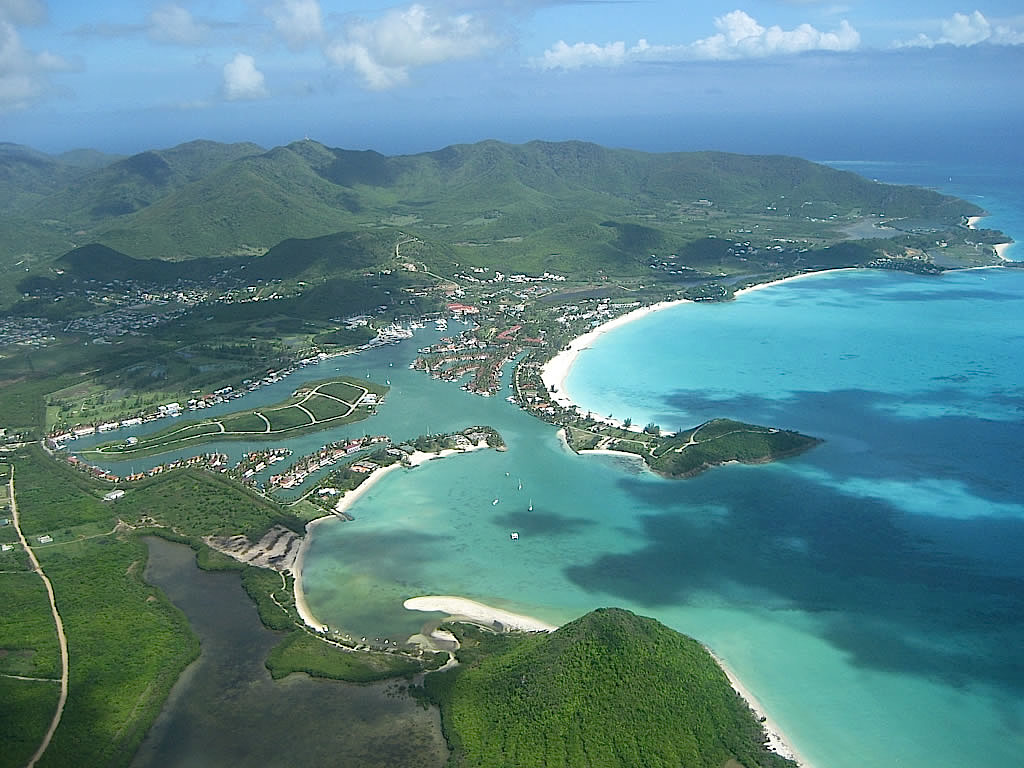
Jolley Harbor
I’ve spent a number of months on a number of
islands and would happily spend many, many more.
I’m a fool for clear blue water and white sand
beaches; not to mention the calm way of life that
is the Caribbean.
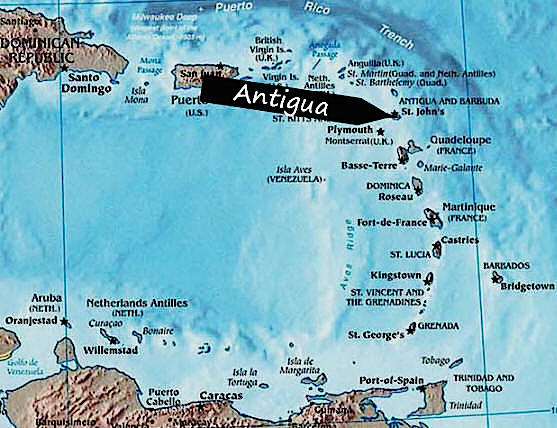 I recently
spent five uninterrupted days in Antigua
lying on the beach--there are 365 of them--catching
up on sleep and drinking plenty of dark rum with
Jenna, a woman of uncommon beauty. We left and
forgot New York on a Sunday (it's a two hour and 15
minute flight from Miami). Our flight landed at VC
Bird International Airport just before noon and by
one o'clock we were sipping a deceivingly strong rum
cocktail known as an “island time.”
I recently
spent five uninterrupted days in Antigua
lying on the beach--there are 365 of them--catching
up on sleep and drinking plenty of dark rum with
Jenna, a woman of uncommon beauty. We left and
forgot New York on a Sunday (it's a two hour and 15
minute flight from Miami). Our flight landed at VC
Bird International Airport just before noon and by
one o'clock we were sipping a deceivingly strong rum
cocktail known as an “island time.”
For many who have not yet stayed
at a Sandals resort, there is a bit of mystery
surrounding the “Sandals’ Experience,” considering
that the resorts are clearly branded around romance;
children are forbidden, and all vacation packages
are intended exclusively for “two people in love.”
Beverages flow generously, flowers are in abundance,
and every couple you meet along the way is
celebrating a relationship milestone.
Located alongside
one of Antigua’s most impressive beaches, Dickenson
Bay, Sandals
Grande Antigua occupies some of the island’s
most coveted real estate. Revered for its absolute
seclusion and overall beauty, Dickenson Bay is in a
class of its own, with a gorgeous beach and pristine
blue green water.
Do expect some peddlers, but fortunately the
trade is tame and the locals kind. English is the
official language among the 70,000 residents.
The resort itself is split into
two connecting sides, the Caribbean and the
Mediterranean; both worthy of a visit, but the
latter side is more to my liking because of its
modernity, having been built in 2007. The entire
property is well groomed and full of lush green
plants and bright blooming flowers, many of which
Jenna tucked behind her left ear.
After a seamless check-in, we
entered our suite, dropped our bags and stepped out
onto our balcony. We spent almost every morning on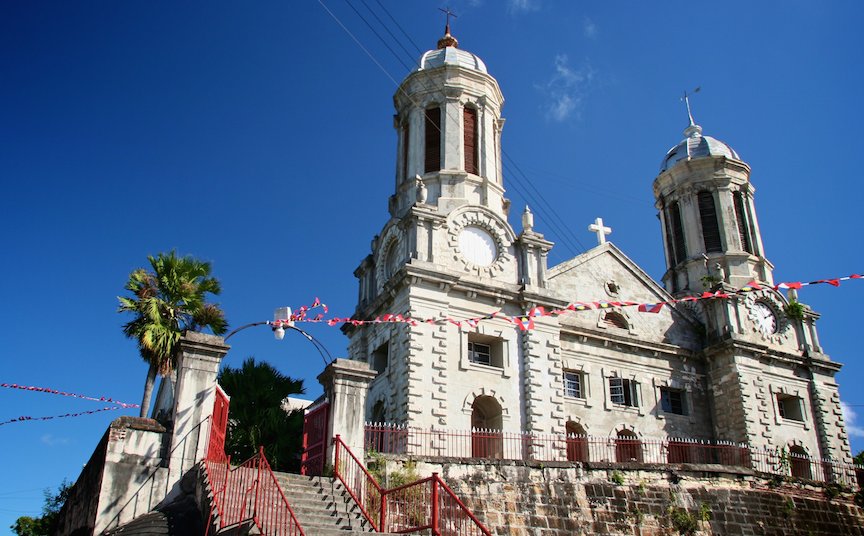 this
balcony drinking coffee, eating freshly baked
croissants and gazing out onto the peaceful horizon.
Our suite was well dressed in tan tones with a
simple, elegant design and a deliberate sense of
privacy. On the wall rested a huge flat-screen
television that we never turned on. We were lost in
each other and happily separated from the rest of
the world.
this
balcony drinking coffee, eating freshly baked
croissants and gazing out onto the peaceful horizon.
Our suite was well dressed in tan tones with a
simple, elegant design and a deliberate sense of
privacy. On the wall rested a huge flat-screen
television that we never turned on. We were lost in
each other and happily separated from the rest of
the world.
Antigua, the largest of the
Leeward islands, was discovered by Britain's Admiral
Nelson in 1784. The capital is St. John's, dominated
by the cathedral of the same name (right), built
in 1845--though earthquakes leveled it twice, in
1683 and 1745--can be seen far off shore from the
cruise ships. Colonial and archaeological artifacts
can be found at the Museum of Antigua and Barbuda,
housed in the colonial Court House. On Friday
and Saturday mornings, there is always a farmers
market in the city. Sea View Farm Village
features the Antiguan folk pottery, once fashioned
by slaves as cooking vessels from local clay,
while Harmony Hall, in Brown's Bay at Nonsuch
Bay, is the center of the Antiguan arts
community. It is also likely you will run into
locals somewhere playing cricket, which is an island
obsession, with official matches on weekends at the
Antigua Recreation Ground.
One
of the most pleasant aspects of our stay was never
being asked to sign for anything. Sandals means it
when they say, “Love is all you need. Everything
else is included.” We were never once asked to
provide a room number or last name in exchange for a
drink or a meal. The staff was simply there to
assist our every need without hesitation or
additional cost. Gratuities are built into the
initial price and absolutely never 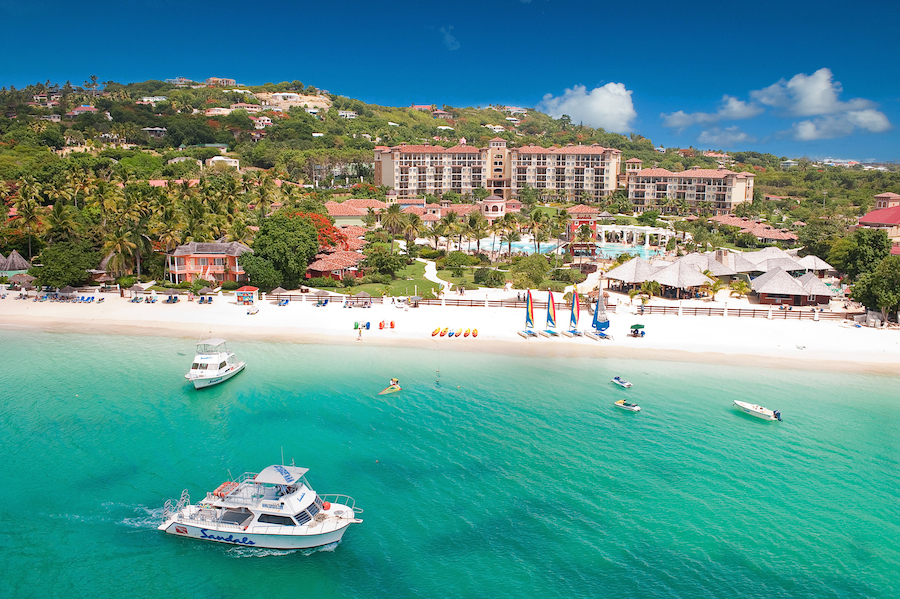 again are
hinted at or suggested. The price you pay upon
booking is all you pay, excluding the obvious:
massages, excursions and trips to the gift store for
Aloe Vera and other forgotten necessities. Mini bars
are replenished for free and none of the menus for
restaurants or room service include prices. This is
a completely refined concept of the all-inclusive.
Did I mention that all liquor is top shelf and all
wines by the glass are from Beringer?
again are
hinted at or suggested. The price you pay upon
booking is all you pay, excluding the obvious:
massages, excursions and trips to the gift store for
Aloe Vera and other forgotten necessities. Mini bars
are replenished for free and none of the menus for
restaurants or room service include prices. This is
a completely refined concept of the all-inclusive.
Did I mention that all liquor is top shelf and all
wines by the glass are from Beringer?
Our vacation had officially begun
and we headed straight to the beach for a dip in the
ocean. Jenna and I spent many afternoons lounging on
this beach, soaking in the sun and occasionally
walking the length of the bay, enjoying its powdery
sand beneath our feet (below). As we relaxed,
drinks were delivered to our umbrella by smiling
faces. We didn’t have to so much as move if we chose
not to. The service was genuine and the staff
extremely friendly, a quality not always found in
some of the other highly visited Caribbean islands.
For our first meal, we dined
right on the beach at one of the resort’s more
casual restaurants, Barefoot. Wooden tables and chairs
sit directly on the sand under a straw thatched
roof. We started off with two Rum and Gingers and a
plate of seared Wahoo and Blue Marlin served in a
creamy coconut curry broth with a side of sliced
papaya. We ate slowly and began to relax as the rum
erased our New York idiosyncrasies.
For our main course we enjoyed a
platter of spicy jerk chicken, as good as any I’ve
had in Jamaica, and a rack of smoked pork ribs
glazed with sweet barbeque sauce. I was introduced
to Susie’s Hot Sauce for the first time, one of the
best I’ve ever tasted, and quickly discovered the
incredible power of the scorpion pepper. Its bottle
does not have a plastic dispense regulator, so pour
with extreme caution or learn the hard way, as I did, that a little
goes a long way.
as I did, that a little
goes a long way.
That evening we visited Eleanor’s, one
of the few restaurants on property requiring a
reservation and formal attire (not too
formal). The restaurant is partially outdoors with a
great view of the moonlit ocean. Service is a bit
more sophisticated than at some of the other
restaurants, as is the food. The conch chowder was
full of flavor as was the shrimp ceviche, served
with ripe pineapple, cucumber, diced tomato and a
fresh lemon-basil dressing.
In between courses we had a few
pictures taken of us by the resort’s full-time
photographer. Do anticipate the resort photographers
intruding on your time together, but their warm
smiles and flattering praises make it more than all
right. Before checking out, these pictures are
available to view and purchase at the photo shop.
The packages were not cheap but how could I say no
after seeing Jenna’s face light up when viewing each
snapshot?
After transitioning to a bottle
of Pinot Noir, we split a grilled lobster and
blackened shrimp, which was bathed in a shallow pool
of warm butter. Mahi Mahi was seared and served with
rice and fried okra. It was charming to witness so
many couples holding hands, drinking wine and
occasionally reaching across to one another for a
romantic kiss. I was pleasantly surprised to see so
many young couples staying at the resort. One
seasoned 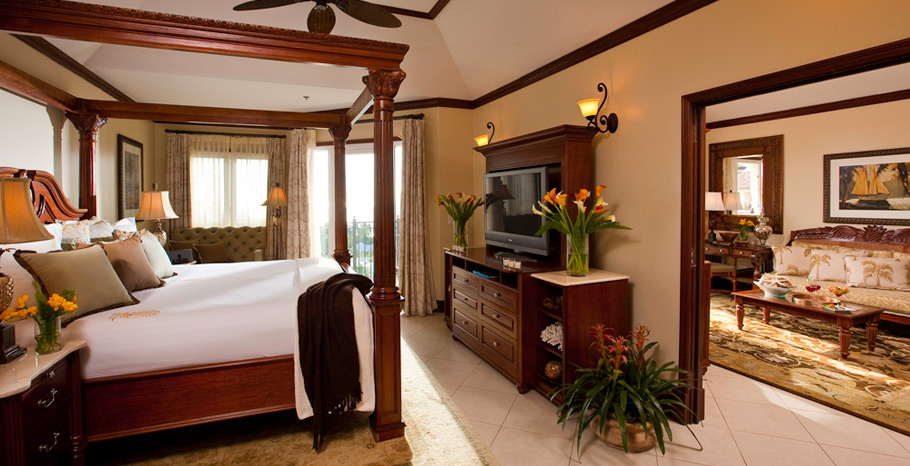 couple
informed us they visit every few years, attributing
this habit to their 23 successful years of marriage.
That evening we retired to our suite for the
remainder of the evening with a bottle of Champagne.
couple
informed us they visit every few years, attributing
this habit to their 23 successful years of marriage.
That evening we retired to our suite for the
remainder of the evening with a bottle of Champagne.
The
next morning we slept in, took our time, ordered
room service and ate out on the balcony, where we
enjoyed a cheddar cheese omelet, French toast,
sliced fruit and sipped coffee while planning a long
day of doing little. An hour or so later we took to
the oasis pool, where we spent most of the day
lounging on rubber pool floats, occasionally
treading our way to the swim-up bar for a cocktail.
Easy listening reggae played softly in the
background as our tans began to resemble caramel.
That afternoon, we mustered enough energy to go jet
skiing along the shoreline, an activity offered by
the locals for the bargaining price of $50.
That evening we dined at one of
the resort’s more ambitious concepts, Kimonos, a
Teppanyaki-style restaurant serving your standard
filet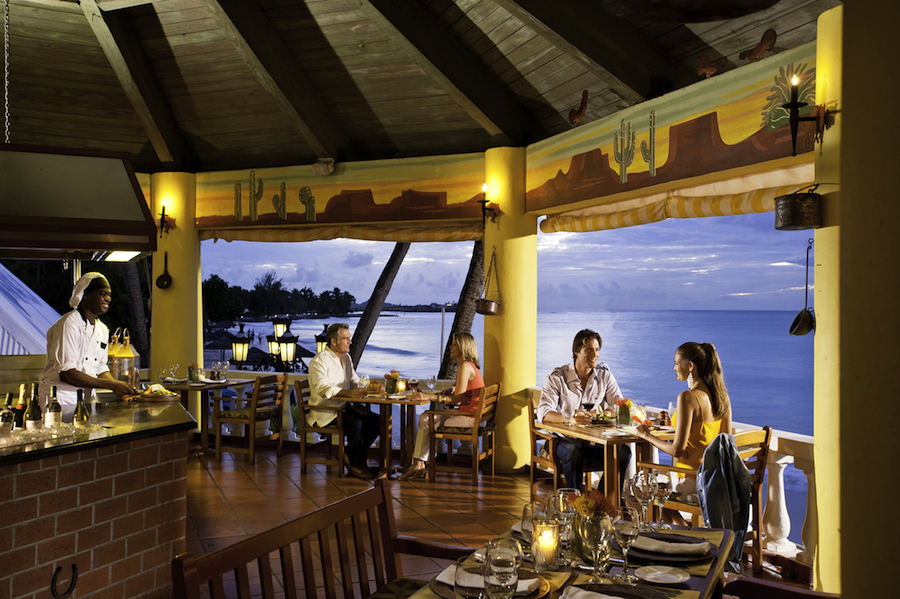 mignon, chicken and shrimp options cooked directly
in front of you, served with mountains of pork fried
rice and tasty starters. The execution was off and
the food only average but the experience was still
fun, even if only for the amount of sake poured.The
resort also offers a very pleasant Italian-inspired
restaurant called Mario’s, a French bakery, a
daytime grab-and-go, a terrific pub serving burgers
and wings named Drunk Duck, and one of my favorites,
OK Corral,
dishing out big slabs of Texas beef and slow cooked
pork belly.
mignon, chicken and shrimp options cooked directly
in front of you, served with mountains of pork fried
rice and tasty starters. The execution was off and
the food only average but the experience was still
fun, even if only for the amount of sake poured.The
resort also offers a very pleasant Italian-inspired
restaurant called Mario’s, a French bakery, a
daytime grab-and-go, a terrific pub serving burgers
and wings named Drunk Duck, and one of my favorites,
OK Corral,
dishing out big slabs of Texas beef and slow cooked
pork belly.
The nightlife is subdued and
ideal for those seeking a few glasses of wine and
casual entertainment. I would highly recommend a
stay of at least five days, bearing in mind the
property is designed for a longer vacation if
desired.
On our last night in Antigua,
Jenna and I took to the beach with a bottle of
chilled white wine, two glasses and blanket to lie
on. After
that, love is all you need.
Sandals Resort Antigua is on Saint John's Dickinson
Bay; 1 + 268-484-0100;
www.sandals.com/destinations/antigua.
All-inclusive packages run at different rates during
and out of season.
❖❖❖
By John Mariani
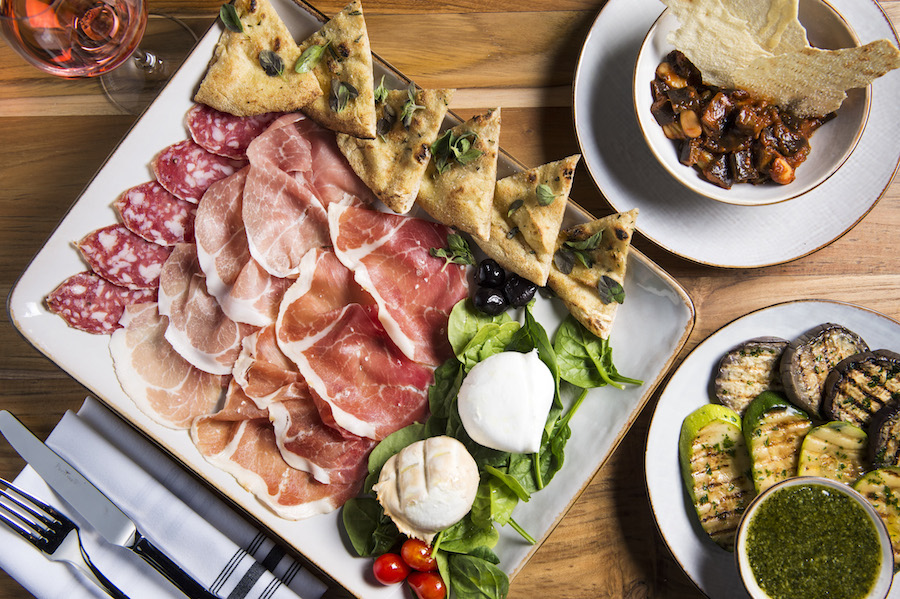 OBICÀ
OBICÀ 928 Broadway (at 21st Street)
212-777-2754
http://obica.com
But, whatever consonant they
use, the owners deserve a big round of bravos for
the new place (there’s already an Obicà
Café in the IBM Building on Madison
Avenue), which is big, sleek, sexy and, with 120
seats and a counter, very convivial, whether
you’re there to sip a negroni or Campari at the
bar or to share a platter of mozzarellas, salami,
bresaola,
prosciutto, mortadella, and lardo, or
just have an early or late-night pizza or indulge
in some luscious pastas.
I almost never write about
chain restaurants, but I’ve waited a long while
for an Obicà to come to New York; there are
already branches in Italian cities, London, L.A.,
Tokyo and Dubai.
The mozzarella itself, which has a legally
Protected Designation of Origin, is flown in twice
a week from Campania, where it is made from water
buffalo (bufala)
milk. American-made mozzarella, which at its best
is excellent, is made from cow’s milk, and in a
good salumeria like
Di Paolo’s
in Little Italy, or
Mike’s Deli
and Casa di Mozzarella in the Bronx, is made
throughout the day.
Imported mozzarella di bufala
is not unique in NYC or elsewhere, but you really
have no way of knowing just how fresh it is, for
it can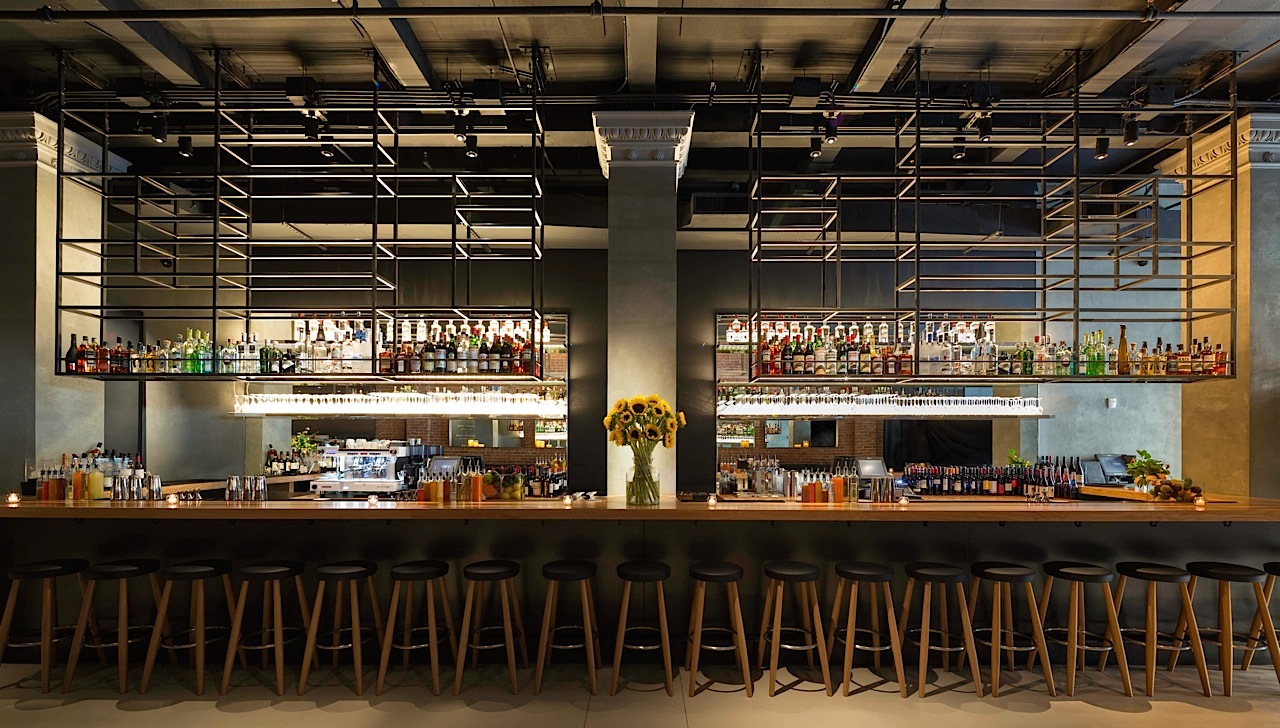 be packed
in brine to preserve it for weeks but loses flavor
very quickly.
(The other NYC restaurant you can depend on
for first-rate product is Mozzarella & Vino
across from the Museum of Modern Art.)
be packed
in brine to preserve it for weeks but loses flavor
very quickly.
(The other NYC restaurant you can depend on
for first-rate product is Mozzarella & Vino
across from the Museum of Modern Art.)
Obicà
offers
four different kinds of mozzarella: bufala
classica, bufala affumicata (smoked with
hay), burrata
and burrata
al tartufo (with black truffle). You can
also have it fried in carozza
($10) or spread it on toasted bruschetta
($10) with anchovies or roasted peppers. The
“Obicà Experience” ($38 per person) is
composed of mozzarella di bufala,
a selection of cured meats and grilled vegetables,
caponata
alla siciliana (eggplant stew) and warm
rosemary-scented focaccia,
followed by a tomato pizza, then dessert—it’s a
great bargain.
The pizzas are in fact some of
the best in Manhattan, ranging from $14 to $26;
one, verdure
grigliate, comes with smoky grilled
eggplant, zucchini and yellow peppers.
So far, that’s a lot of food,
and you can easily nosh to your heart’s content,
especially with a table of three or four friends,
and the bill can be kept to a moderate level. But if
you want to sample all that Obicà can do
and do very well, avail yourself of one of the
pastas, like the rustic pappardelle
al ragù ($20 for a full portion), the
basil pesto-dressed
trofie ($18),
the
lavish schiaffoni
macaroni with tomato and mozzarella ($16), or the
ravioli with ricotta and spinach glistening with
sage butter ($19).
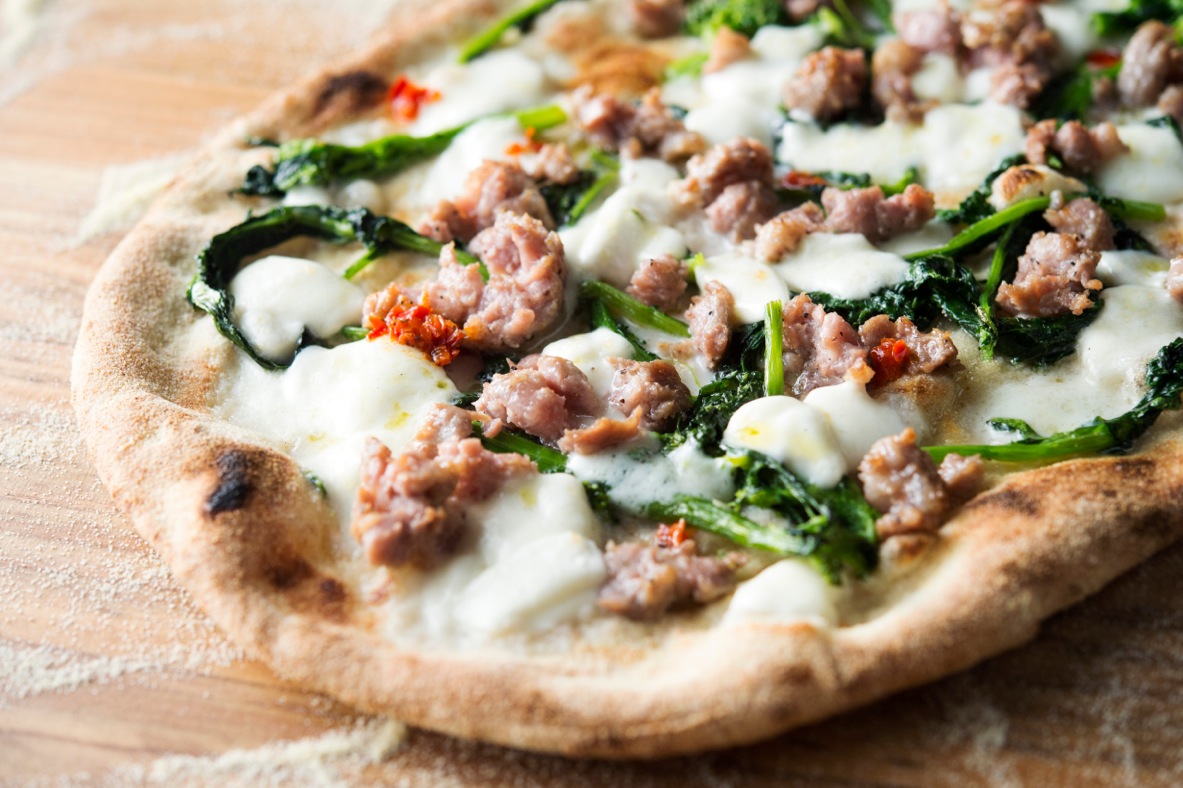 This is a
big menu but the main courses are worth trying,
particularly a well-rendered black cod with a
chickpea puree and grilled radicchio ($27). The
veal cutlet alla
milanese ($39), however, needs work: it is
so thinly pounded you taste more crust than veal.
This is a
big menu but the main courses are worth trying,
particularly a well-rendered black cod with a
chickpea puree and grilled radicchio ($27). The
veal cutlet alla
milanese ($39), however, needs work: it is
so thinly pounded you taste more crust than veal.
There are also some worthwhile
desserts here, including a good tiramisù,
a carpaccio of pineapple marinated in mint syrup
with pink peppercorns and lemon sorbetto,
and a pudding-like cream of ricotta di bufala
with candied orange peel.
Obicà’s wine list is
formidable and offers good value in many price
categories, with plenty of wines by the glass,
which is a good way to go if you’re sitting at the
bar.
You might
think that Obicà is another of those
brutally loud new places with scatterbrain
service—“Who gets what?”—but, although it is far
from quiet, with some corners louder than others,
the wait staff 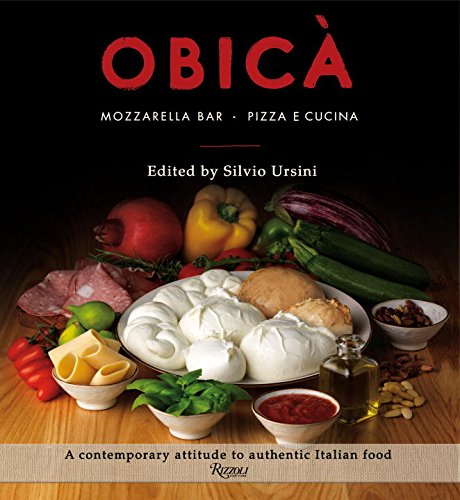 is friendly and knows
every item on the menu, so that the happy sound of
people thoroughly enjoying themselves is another
of the appealing aspects of this very Italian
experience.
Managing partner and CEO Raimondo Boggia is
often on the premises of the new restaurant to
make everything click and Chef Enzo Beri is in the
kitchen making sure everything tastes the same as
in the Roman original. The
company has also published a new Obikà
Cookbook (right), with many of the dishes
served at the restaurant. though it helps if you
can fly over your mozzarella di bufala
twice a week.
is friendly and knows
every item on the menu, so that the happy sound of
people thoroughly enjoying themselves is another
of the appealing aspects of this very Italian
experience.
Managing partner and CEO Raimondo Boggia is
often on the premises of the new restaurant to
make everything click and Chef Enzo Beri is in the
kitchen making sure everything tastes the same as
in the Roman original. The
company has also published a new Obikà
Cookbook (right), with many of the dishes
served at the restaurant. though it helps if you
can fly over your mozzarella di bufala
twice a week.
Obicà
is located at 928 Broadway at 21st
Street; 212- 777-2754. Open for
lunch Mon.-Fri.; Brunch Sat. & Sun.; dinner
nightly.
❖❖❖
By John Mariani
PACIFIC OVERTURES IN THE WHISKEY MARKET
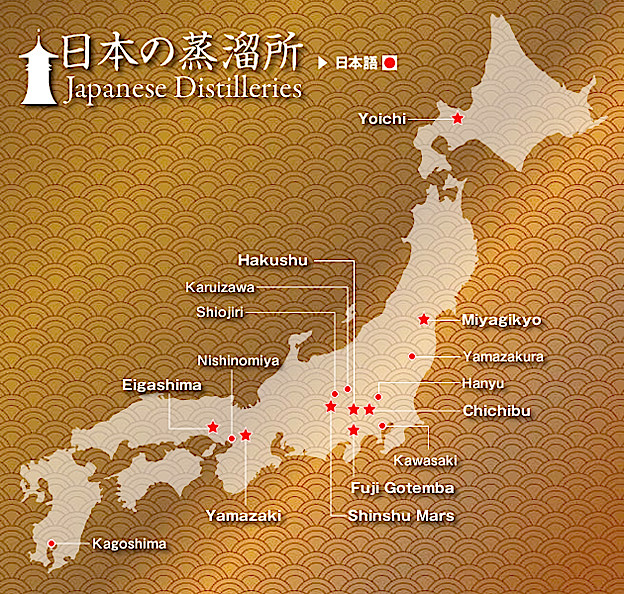 When Suntory
Holdings Limited bought America’s Beam Inc. last
April for about $16 billion, the Japanese
corporation became the third largest premium
spirits company on earth and adapted the slogan
“Suntory is Crafting the Spirits that Stir the
World.”
When Suntory
Holdings Limited bought America’s Beam Inc. last
April for about $16 billion, the Japanese
corporation became the third largest premium
spirits company on earth and adapted the slogan
“Suntory is Crafting the Spirits that Stir the
World.”
With the Beam acquisition, Suntory,
with about $4.6 billion in worldwide sales, added
to its own Yamazaki Japanese whiskey brand some of
America’s best known bourbons, including Maker’s
Mark and Knob Creek, along with Japanese
competitors Hakashu and Hibiki, Teacher’s,
Laphroaig, and Bowmare Scotch whiskey, and several
other spirits brands. The new company is called
Beam Suntory, Inc., headquartered in Deerfield,
Illinois.
Still, even with such new clout
in the marketplace, Suntory, which started making
whiskey back in 1923, has stiff, growing
competition, not least from rival Nikka
Whiskey Distilling Co., which makes
a Yoichi 15-year-old ($130) single malt, Taketsuru
12-Year Old pure malt ($70), 17 Year-old ($150),
21-Year-old ($180), and Miyagikyo 12-Year-old
($120). Chichibu
is another Japanese spirits producer, known for
its Ichiro’s Malt ($240).
Notice that none is labeled
“Scotch Whiskey,” which is forbidden by law, but
the prices are up there with some of the most
expensive Scotches made, like Macallan 18 Year-old
($200) and Talisker 18-year-old ($109). Yet
these Japanese whiskeys are in short supply
outside 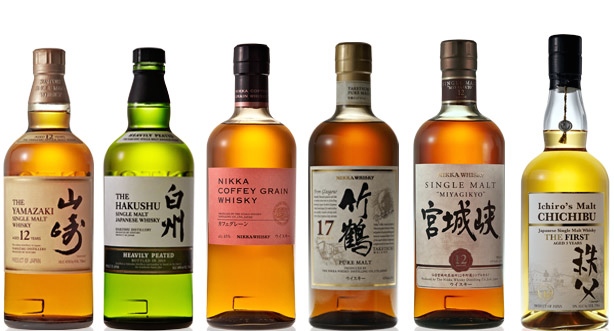 of Japan, with only
about 8,000 cases total entering the U.S. market.
For the time being, they are connoisseurs’
whiskeys, with sales largely in New York, Chicago,
California and Hawaii.
of Japan, with only
about 8,000 cases total entering the U.S. market.
For the time being, they are connoisseurs’
whiskeys, with sales largely in New York, Chicago,
California and Hawaii.
Almost all the Japanese
whiskeys are blends of several years’ production.
In Japan they are usually drunk fairly young and
with three parts soda, called a “highball” that is
even sold in cans at convenience stores. Only
recently have the distillers begun to lay away
their spirits for aging.
Suntory—whose
corporate mantra is “Yatte
Minahare!” (Go for it!)—received a huge
boost in visibility when its product appeared in
the movie “Lost in Translation” as the
whiskey Bill Murray does a TV ad for—“It’s Suntory
time!”--and drinks at Tokyo’s Park
Hyatt Hotel’s New York Bar, where
visitors ask to sit at the stool Murray perched on
in the film.
I have had occasion to taste
many of the Japanese whiskeys and come away
impressed. And
when I visited Taiwan last year, I found that the
Chinese are coming apace fast in the spirits
market, not least Kavalan,
opened by the King Car Whiskey Distillery, in 2008
in a state-of-the-art distillery amidst some of
the island’s most beautiful scenery in Yilan
County. Less
than three years later, Kavalan won the
International Wine and Spirits Competition’s
trophy as Asia Pacific Spirit Producer of the
Year. (Suntory took a gold medal in the same
competition for its Yamazaki 12-Year-old.)
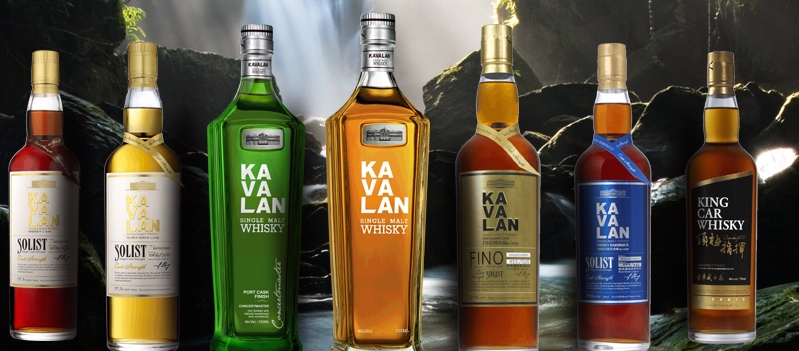 Though there a few
of smoky, peaty Asian whiskeys, overall they tend
to run on the sweeter side of the genre, with a
good deal of caramelization from the charred
barrels used for Sherry or bourbon, in the case of
Hibiki, plum liqueur casks.
Though there a few
of smoky, peaty Asian whiskeys, overall they tend
to run on the sweeter side of the genre, with a
good deal of caramelization from the charred
barrels used for Sherry or bourbon, in the case of
Hibiki, plum liqueur casks.
Suntory's Hakushu 12-Year-Old,
has both fruit and citrus notes, with just a light
smoky scent and flourishes when you add a dash of
water (which is the way professional tasters drink
whiskey). It has a definite sweetness, so
those interested in a premium Japanese whiskey
will want to taste some lighter entries before
going to the Hakushu. Hibiki 12-Year-Old won
top prize in its category at the 2010 World Whisky
Awards and a Gold Medal in 2012 from Whisky
Worldwide.
Taiwan's
Kavlan spirits also establish their identities
through various barrel aging (below).
They are very cleanly made, most with that fruited
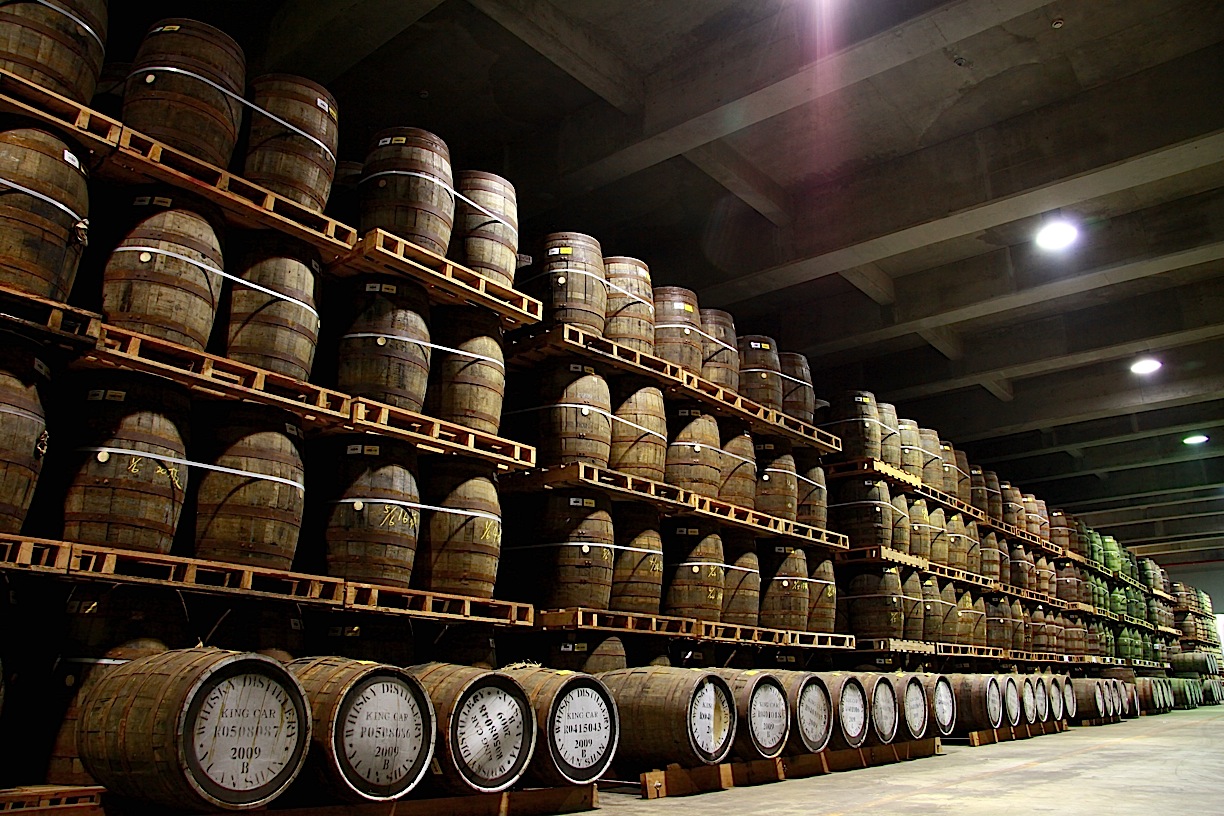 sweet
component. The Concertmaster label is first
matured in American oak then aged in Portuguese
Port barriques "as the main flavour." A
variation called ex-Bourbon Oak is diluted to 46
percent strength that softens the edge of the
Solist whiskey; Solist Sherry is matured in
Spanish Sherry oloroso casks, with no additional
coloring, and results in the company's most
complex whiskey. The top of the line is its
Solist Single Cask Strength, which comes in at
55-60 percent, matured in Fino Sherry butts.
sweet
component. The Concertmaster label is first
matured in American oak then aged in Portuguese
Port barriques "as the main flavour." A
variation called ex-Bourbon Oak is diluted to 46
percent strength that softens the edge of the
Solist whiskey; Solist Sherry is matured in
Spanish Sherry oloroso casks, with no additional
coloring, and results in the company's most
complex whiskey. The top of the line is its
Solist Single Cask Strength, which comes in at
55-60 percent, matured in Fino Sherry butts.
Not unlike premium Scotch
single malts and small batch bourbon, these Asian
whiskeys are aiming at a rarefied world market for
first impressions. But with the Asian market
for such spirits expanding rapidly, production
goals might well turn inward in the years to come,
and sooner than later.
❖❖❖
An
Amore
for Amarone
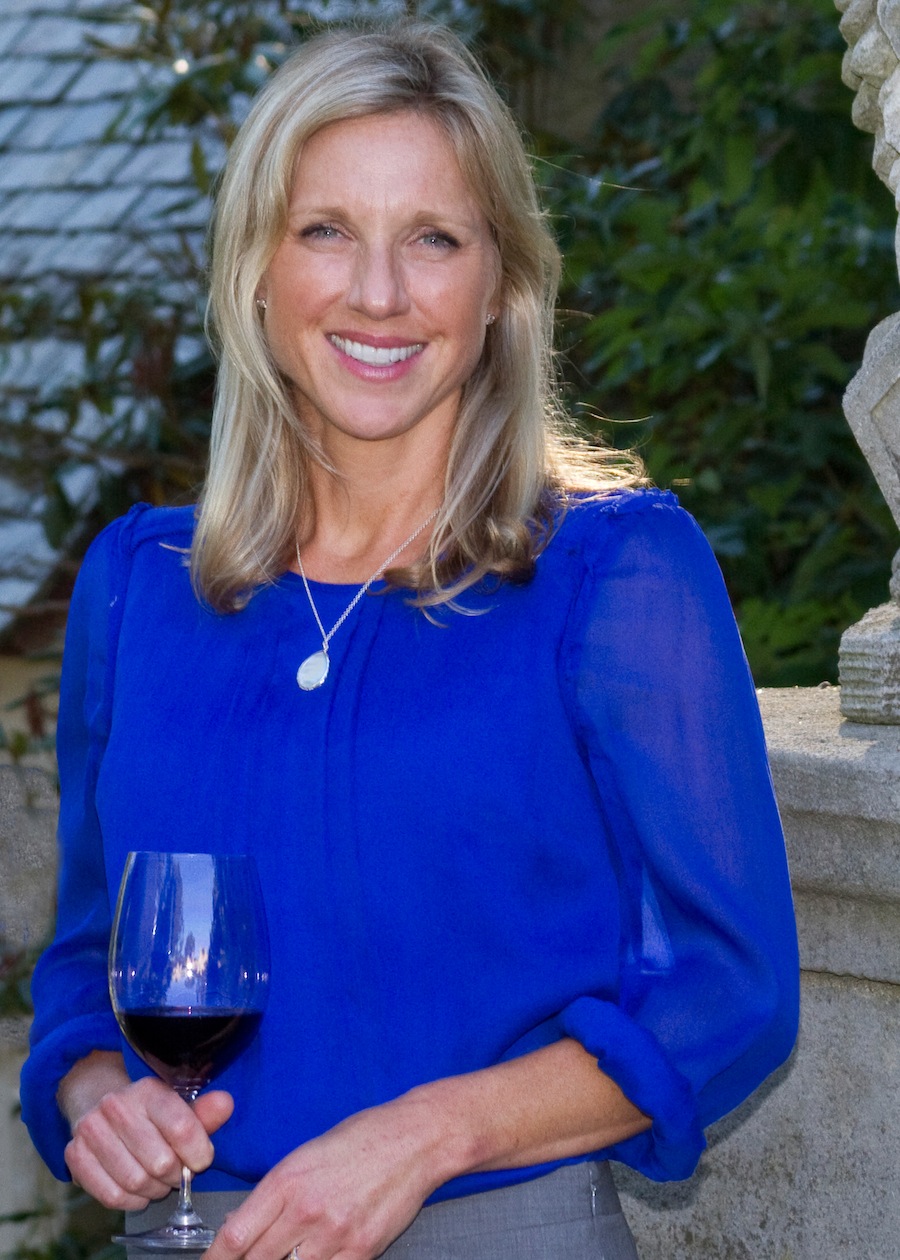 by Cristina Mariani-May
by Cristina Mariani-May
co-CEO of Banfi Vintners America's leading wine importer
Amarone is liquid proof that wine,
like nature itself, is far from static; it is constantly
evolving, offering surprises, adapting to change, always
seeking to please and, more often than not, succeeding.
I am pretty sure those were the
thoughts of Abele Bolla when he firmly decided that of
all the wines his family cellars produced – renowned
Soave, lovely Valpolicella, charming Bardolino, a
seductive Recioto and more – the Amarone was his
favorite.
As parents and grandparents tend to
have a soft spot for the baby of the family, maybe the
one with some perceived weakness, Abele had a soft spot
for the ‘accident’ that was Amarone. You see,
during Abele’s 19th century and for generations before –
perhaps millennia, as we know the ancient Romans made
wine in Verona this way – the pride of Verona’s regional
farmer-winemakers was Recioto.Recioto della Valpolicella
was (and still is) made from the same grapes as the
lighter bodied Valpolicella, but those grapes were
carefully left to dry into plump raisins and the
winemaking took place in the cold of early winter. 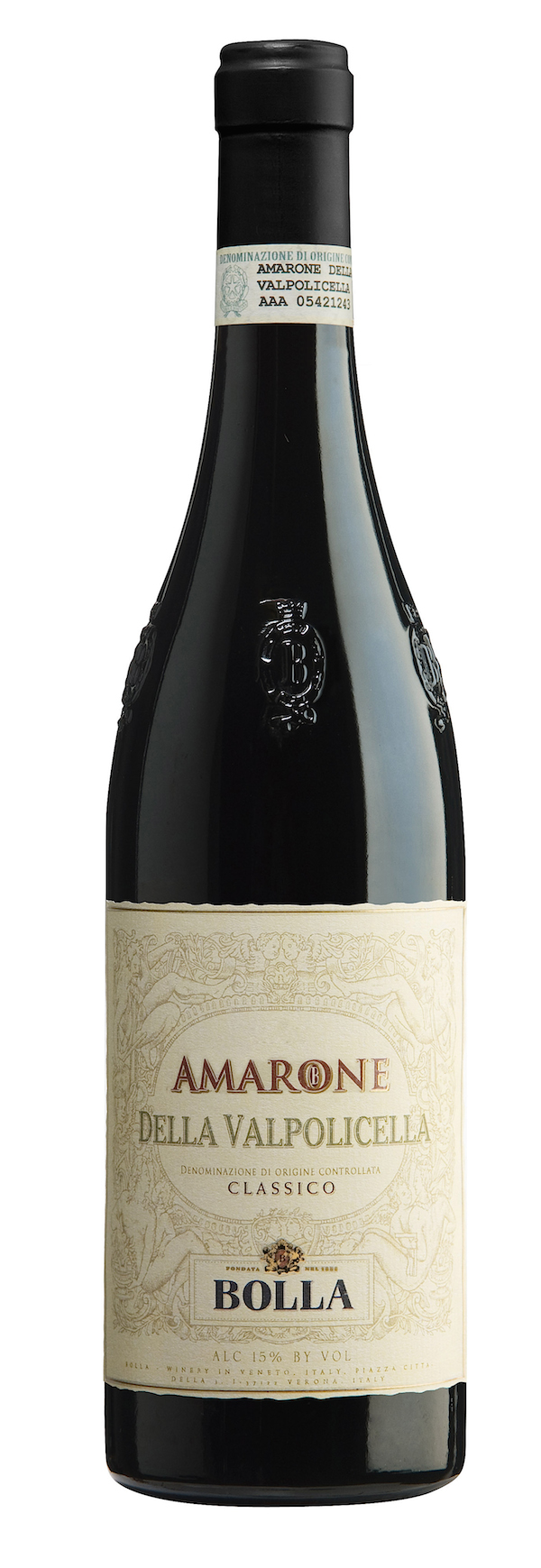
As a result, in the days before
temperature control, the fermentation process of
converting sugars into alcohol did not fully run its
course, impeded by the lower ambient temperatures.
While the wine remained with a solid alcohol content, it
was still rich and sweet. It was considered a
nectar, a treat, and a downright necessity in the day
when hard-working, hungry, cash-strapped farmers looked
at wine as an important source of calories in their
diet. But if the weather was fickle and
unseasonably warm, or if the winemaker was a little
preoccupied and did not get to that one barrel hidden in
the corner, the wine continued fermenting as the ambient
temperatures rose, consuming the sugars, and becoming
completely dry.
If we logically and linguistically
consider the opposite of sweet to be bitter, an
alternate term for dry in Italian wine terminology, then
we understand the meaning of the word amarone – from the
word amaro, or bitter, with the suffix indicating
bigness – the big bitter one, or the big dry wine.
To some it was an expression of frustration for the
sweet wine they lost, but for Abele it was a term of
endearment for his new favorite wine.
As my own children know just how to
push their own grandfather’s buttons, Abele’s
grandchildren knew well his favorites. On his 80th
birthday in 1954 they dedicated a bottling for “Nonno.”
Bolla became, controversially, the first winery to
release an Amarone commercially for sale.
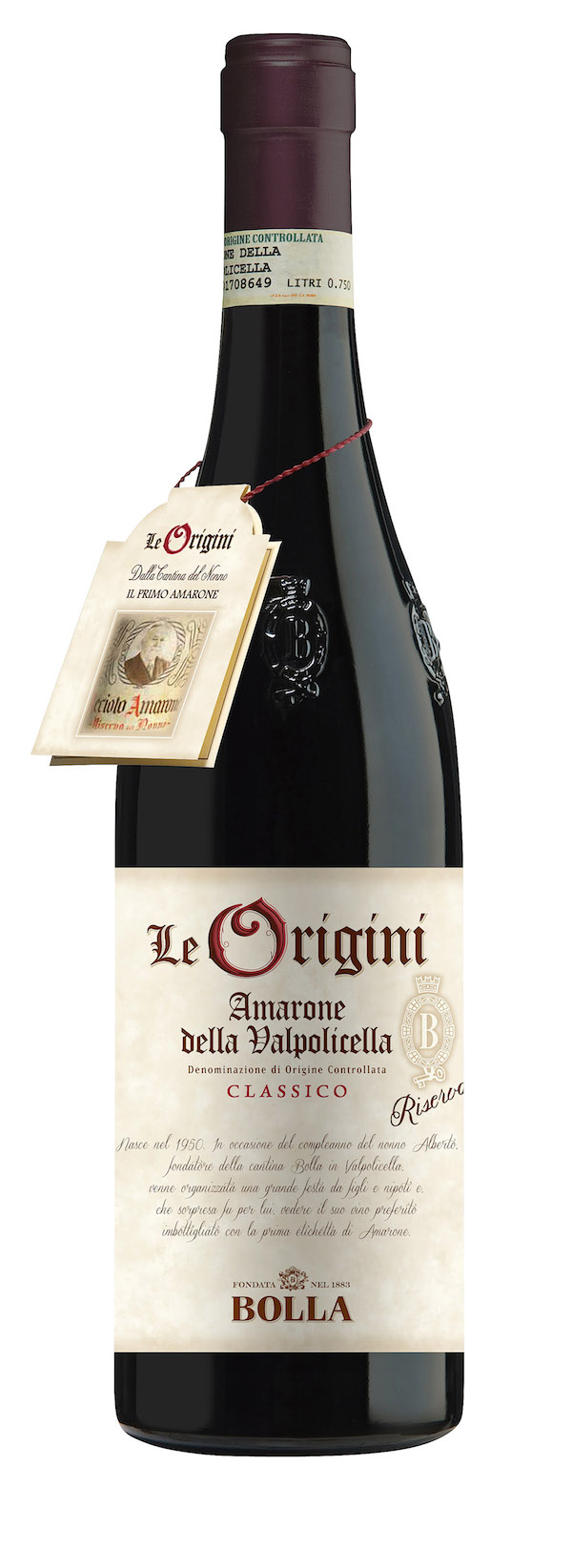 Pietro Sartori had an
affection for Amarone as well. His descendants have been
producing Amarone since at least the early 1960s, but
you would be hard-pressed today to find any of those
older vintages, at least in the Sartori family cellars
in Negrar, outside of Verona. “Our philosophy is
that wine is for drinking, not for saving,” says
Pietro’s grandson, my dear friend Andrea Sartori, the
current head of Sartori di Verona winery. “The
only wines grandfather ever saved were the dessert wines
that he stashed in his home’s bomb shelter at the onset
of World War II. Fortunately, the German troops
who occupied the house for the last couple of years of
the war never found them, though they did manage to
drink everything else in the cellars!”
Pietro Sartori had an
affection for Amarone as well. His descendants have been
producing Amarone since at least the early 1960s, but
you would be hard-pressed today to find any of those
older vintages, at least in the Sartori family cellars
in Negrar, outside of Verona. “Our philosophy is
that wine is for drinking, not for saving,” says
Pietro’s grandson, my dear friend Andrea Sartori, the
current head of Sartori di Verona winery. “The
only wines grandfather ever saved were the dessert wines
that he stashed in his home’s bomb shelter at the onset
of World War II. Fortunately, the German troops
who occupied the house for the last couple of years of
the war never found them, though they did manage to
drink everything else in the cellars!”
As if to make up for the missing
Amarone of past vintages, Andrea puts his mind each year
to making no fewer than three Amarones. The first
is his classic ‘house’ version, labeled, simply enough,
as “Sartori Amarone della Valpolicella.” It bears
a shimmering ruby red color, with a bouquet of dried
fruits, raisins, and cherry compote with cocoa
notes. Round and full bodied, it has deep fruit
flavors and supple tannins with a note of cinnamon spice
on the finish. Andrea uses the traditional,
classic varietals of Corvina, Corvinone and Rondinella
with just a touch of Cabernet to round out the wine.
Taking it up a notch, Sartori’s Corte
Bra cru of Amarone replaces the Cabernet with a very old
grape varietal, one that almost went extinct because of
the challenges in growing it – Oseleta. The grapes come
from a single vineyard in the heart of the Valpolicella
region, and the Oseleta gives the wine more depth,
complexity and austerity. Andrea responds 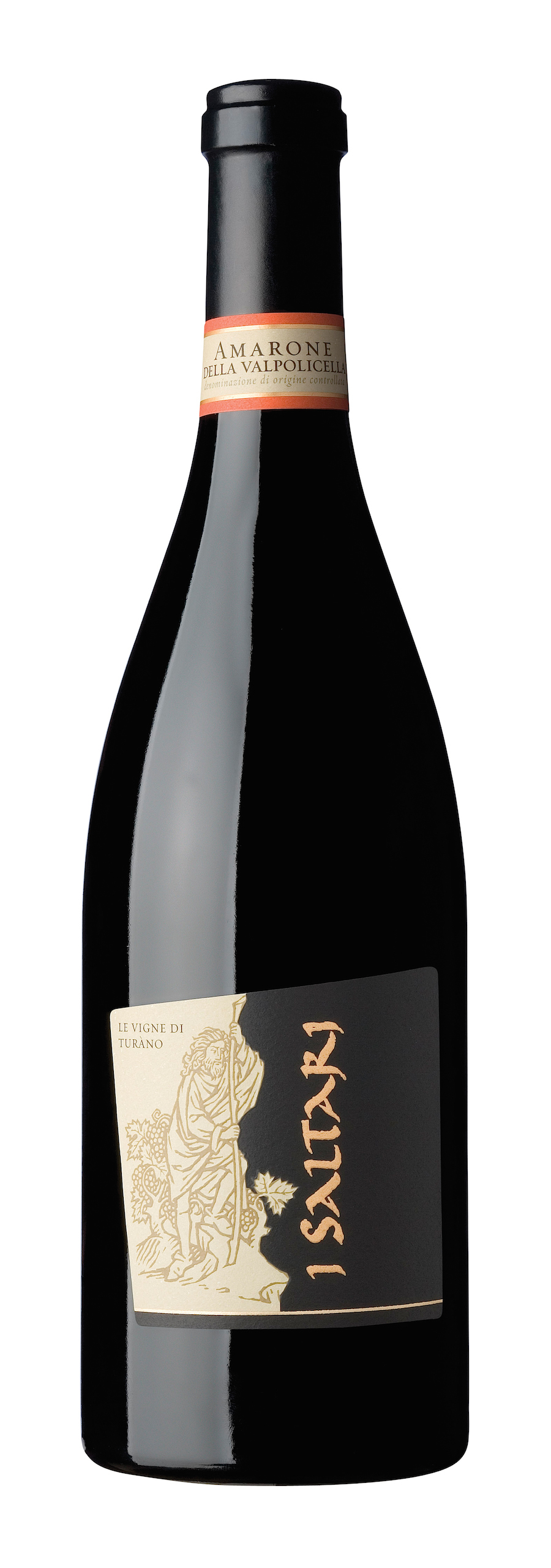 to this by giving the wine more time in
wooden barrels, resulting in a wine with instensely
vivid garnet color, a bouquet of dried fruits, ripe
berry and plum; it is rich, velvety and full bodied,
with a lingering finish.
to this by giving the wine more time in
wooden barrels, resulting in a wine with instensely
vivid garnet color, a bouquet of dried fruits, ripe
berry and plum; it is rich, velvety and full bodied,
with a lingering finish.
Seeking further diversity, in 2006
Andrea Sartori introduced a new premium Amarone from his
newly purchased I Saltari winery in the Mezzane Valley,
east of Verona. The winery is named for mercenary
vineyard guardians, “Saltari,” hired by vineyard owners
from the 16th through 18th centuries to protect their
grapes from thieves and bandits. With legal
authority to shoot thieves on sight, the Saltari were
ready defenders of the vineyards. The choice of
the name reflects Andrea Sartori’s own dedication to
defending tradition and expressing the unique terroir of
these vineyards (without any shooting, Andrea assures
me!).
I Saltari Amarone is a deep ruby red
with intense violet reflections. It offers a spicy
aroma with hints of dried figs, cherry and aromatic
herbs. It is well balanced with good persistence
on the palate, thanks to elegant and delicate tannins.
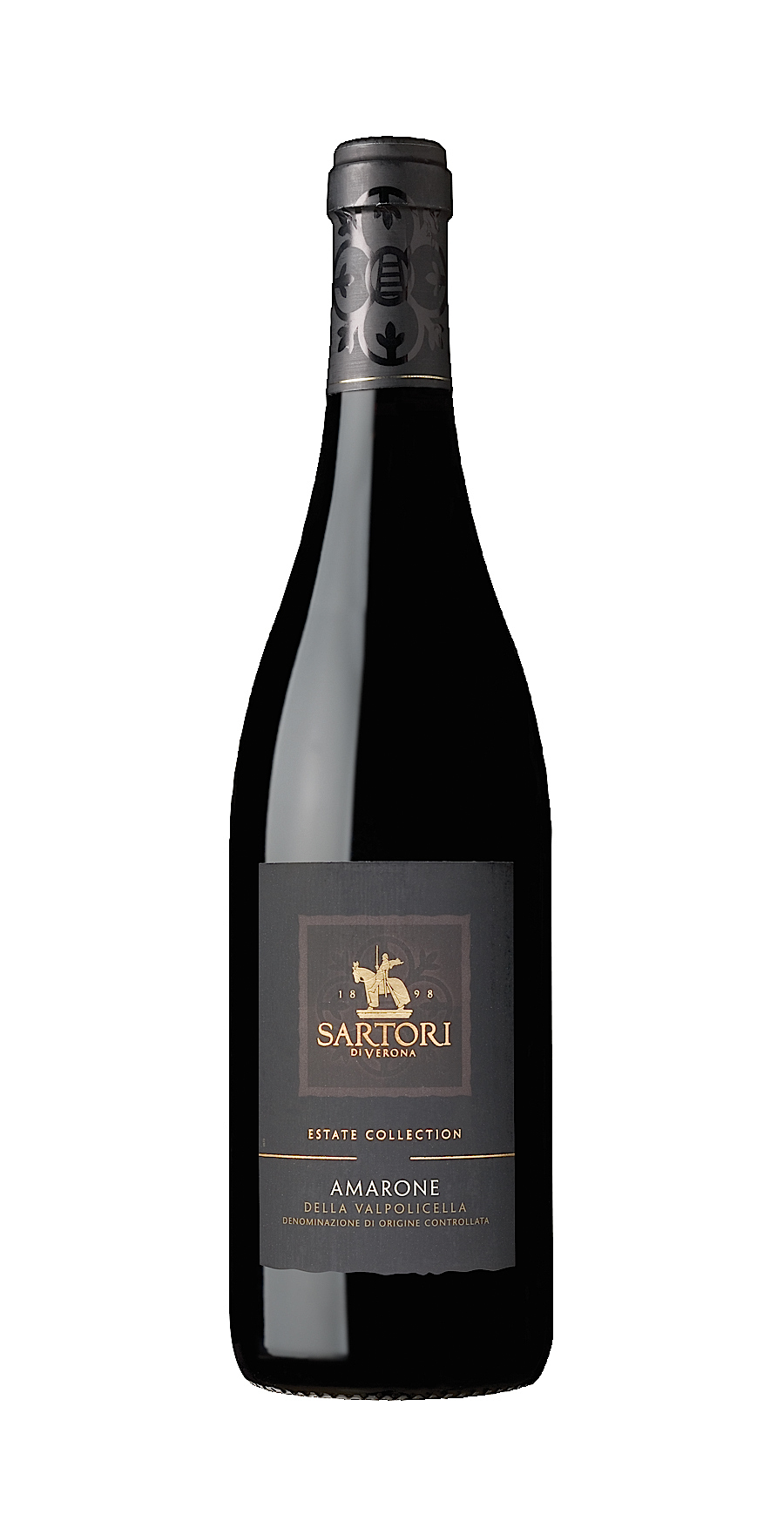 Our friends at
Bolla also produce two Amarones. Their classic Bolla
Amarone della Valpolicella, fortunately for us widely
available, is a deep garnet, velvety red with aromas of
wild-cherry jam, spice, and hints of cedar. It is
rich and dry, with black cherry flavors and a round long
finish with cacao and spice.
Our friends at
Bolla also produce two Amarones. Their classic Bolla
Amarone della Valpolicella, fortunately for us widely
available, is a deep garnet, velvety red with aromas of
wild-cherry jam, spice, and hints of cedar. It is
rich and dry, with black cherry flavors and a round long
finish with cacao and spice.
The Bolla Le Origini Amarone is a
wine dedicated to the traditions of Nonno Abele’s day
and Bolla’s roots in making classic styled
Amarone. It offers up a bouquet redolent of wild
cherries, black fruit, vanilla and licorice with hints
of cedar. It is full bodied and velvety, with ripe
tannins and notes of plums, cocoa and spices.
The Bolla, Sartori and I Saltari
wines are wonderful examples of loyalty to Amarone’s
true nature as food wine, in contrast to many other
jammy, super-concentrated wines that seem more
appropriate for the dessert course. You can enjoy
Bolla, Sartori and I Saltari amarones with roasts, game
and aged cheeses, all about to make their appearance on
our autumnal tables. Or you also can enjoy them in
the ultimate Italian and Veronese tradition as wines of
“meditation” – to sip while contemplating life, fondly
remembering your own grandfather, as do I, or, if you
are lucky enough to still have him, enjoying it with him
in mutual admiration.
Cristina Mariani is not related by family or through
business with John Mariani, publisher of this
newsletter
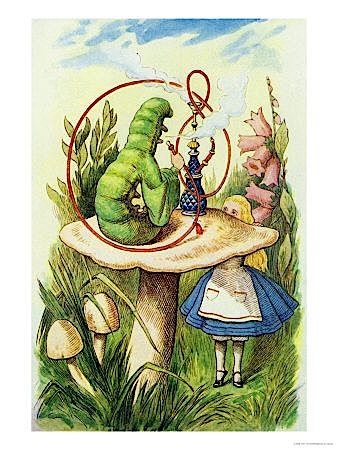
GO ASK ALICE!

The photo
department of the Oregonian ran a photo of
the wrong mushroom in its Sunday paper, The
photo was supposed to depict the matsutake mushroom but
instead showed Amanita muscaria (right), a
muscimol-containing specimen the paper says causes "wild
behavior."
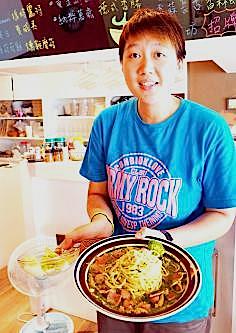 JAH, DAS IST EIN DUMKOPF DISH!
JAH, DAS IST EIN DUMKOPF DISH!
Tsao Ya-sin, owner of the Italian
restaurant Rock Hill in Taiwan's capital Taipei, says
she "knows little about World War II," so she
didn't expect the protests against her Third
Reich–themed "Long Live Nazi Spaghetti" for her pasta
special, which contains German sausage in it. She then
changed the name to "World Champion
Spaghetti," to honor the Germany's World Cup
victory.
Any of John Mariani's
books below may be ordered from amazon.com.
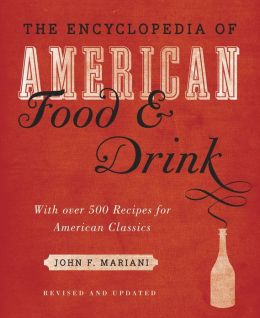 |
The Encyclopedia of American Food and Drink by John F. Mariani (Bloomsbury USA, $35) Modesty forbids me to praise my own new book, but let me proudly say that it is an extensive revision of the 4th edition that appeared more than a decade ago, before locavores, molecular cuisine, modernist cuisine, the Food Network and so much more, now included. Word origins have been completely updated, as have per capita consumption and production stats. Most important, for the first time since publication in the 1980s, the book includes more than 100 biographies of Americans who have changed the way we cook, eat and drink -- from Fannie Farmer and Julia Child to Robert Mondavi and Thomas Keller. "This book is amazing! It has entries for everything from `abalone' to `zwieback,' plus more than 500 recipes for classic American dishes and drinks."--Devra First, The Boston Globe. "Much needed in any kitchen library."--Bon Appetit. |
"Eating Italian will never be the same after reading John Mariani's entertaining and savory gastronomical history of the cuisine of Italy and how it won over appetites worldwide. . . . This book is such a tasteful narrative that it will literally make you hungry for Italian food and arouse your appetite for gastronomical history."--Don Oldenburg, USA Today. "Italian
restaurants--some good, some glitzy--far
outnumber their French rivals. Many of
these establishments are zestfully described
in How Italian Food Conquered the World, an
entertaining and fact-filled chronicle by
food-and-wine correspondent John F.
Mariani."--Aram Bakshian Jr., Wall Street
Journal.
"Equal parts
history, sociology, gastronomy, and just
plain fun, How Italian Food Conquered the
World tells the captivating and delicious
story of the (let's face it) everybody's
favorite cuisine with clarity, verve and
more than one surprise."--Colman Andrews,
editorial director of The Daily
Meal.com. "A fantastic and fascinating
read, covering everything from the influence
of Venice's spice trade to the impact of
Italian immigrants in America and the
evolution of alta cucina. This book will
serve as a terrific resource to anyone
interested in the real story of Italian
food."--Mary Ann Esposito, host of PBS-TV's
Ciao
Italia. "John Mariani has written the
definitive history of how Italians won their
way into our hearts, minds, and
stomachs. It's a story of pleasure over
pomp and taste over technique."--Danny Meyer,
owner of NYC restaurants Union Square
Cafe, The Modern, and Maialino.
|
 |
 |
 |
 |
 |
 |
 |
 |
 Everett Potter's Travel Report:
Everett Potter's Travel Report: 
 Eating Las
Vegas is the new on-line site for
Virtual Gourmet contributor John A. Curtas.,
who since 1995 has been commenting on the
Las Vegas food scene and reviewing
restaurants for Nevada Public Radio.
He is also the restaurant critic for KLAS
TV, Channel 8 in Las Vegas, and his past
reviews can be accessed at KNPR.org.
Click on the logo below to go directly to
his site.
Eating Las
Vegas is the new on-line site for
Virtual Gourmet contributor John A. Curtas.,
who since 1995 has been commenting on the
Las Vegas food scene and reviewing
restaurants for Nevada Public Radio.
He is also the restaurant critic for KLAS
TV, Channel 8 in Las Vegas, and his past
reviews can be accessed at KNPR.org.
Click on the logo below to go directly to
his site.

Tennis Resorts Online: A Critical Guide to the World's Best Tennis Resorts and Tennis Camps, published by ROGER COX, who has spent more than two decades writing about tennis travel, including a 17-year stretch for Tennis magazine. He has also written for Arthur Frommer's Budget Travel, New York Magazine, Travel & Leisure, Esquire, Money, USTA Magazine, Men's Journal, and The Robb Report. He has authored two books-The World's Best Tennis Vacations (Stephen Greene Press/Viking Penguin, 1990) and The Best Places to Stay in the Rockies (Houghton Mifflin, 1992 & 1994), and the Melbourne (Australia) chapter to the Wall Street Journal Business Guide to Cities of the Pacific Rim (Fodor's Travel Guides, 1991).


MARIANI'S VIRTUAL GOURMET
NEWSLETTER is published weekly. Editor/Publisher: John
Mariani.
Editor: Walter Bagley. Contributing Writers: Christopher Mariani,
Robert Mariani, Misha
Mariani,
John A. Curtas, Edward Brivio, Mort Hochstein,
Andrew Chalk, Dotty Griffith and Brian Freedman. Contributing
Photographers: Galina Dargery, Bobby
Pirillo. Technical Advisor: Gerry McLoughlin.
To un-subscribe from this newsletter,click here.
© copyright John Mariani 2014

